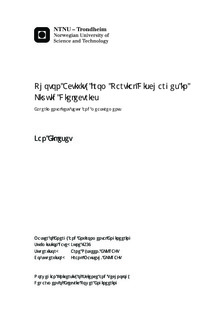| dc.description.abstract | New subsea processing plants are planned to operate at large depths, down to 5000 meters. Power electronic converters are a crucial part of the plants hardware. In order for the converters to operate at such deep depths, they are placed inside steel vessels. Current utilized technology have atmospheric conditions inside the steel vessels. The wall thickness may be as large as ≈10cm, in order to handle the large external pressure. This solution is expensive and introduce other complications for the operation of the converters. A new design consist of filling the steel vessels with pressure compensated dielectric liquids, known as Pressure Tolerant Power Electronics. The high power rating for some parts of the converters can introduce high electrical field stress in some locations. This field stress may initiate partial discharges inside the converter vessels. This is an unwanted phenomenon, since partial discharges may damage and deteriorate the liquid insulation and power electronic components. In worst case, the partial discharges can develop into complete electrical breakdowns. Routine tests of partial discharge activity is therefore crucial inside the converter vessels, in order to monitor the condition of the converter. However, it can be problematic separating actual partial discharges from other noise sources in system, such as stray capacitance from fast switching. Hence, precise electrical partial discharge measurement may be difficult to conduct. This thesis study the correlation between light emission and the charge magnitude from partial discharges in different dielectric liquids. Light measurement is believed to be a capable method to monitor certain exposed fixed points inside the converter vessels. Most of the work is experimental, and consist of building a noise free, <0.5pC, resonance test circuit, with the ability to measure PD activity in dielectrical liquids both optically and electrically. Partial discharges are initiated across a point-plane electrode configuration, inside a 1.6 litre test-cell. A Hamamatsu R1635 Photo Multiplier Tube, in combination with an oscilloscope is used to register photon activity in the partial discharges. Power Diagnostix ICM System is used to measure electrical partial discharge signals. The experiments have revealed a correlation between emitted light and partial discharge magnitude for some dielectric liquids. Especially promising correlations are seen between the large and crucial partial discharges, >0.5nC. In addition, correlations between emitted light and partial discharge energy is registered. As for smaller partial discharges some cohesiveness seem to exists, but vary greatly for different dielectrical liquids. Further work about the subject is needed before the results can be practically useful. However, promising tendencies are observed. | nb_NO |

